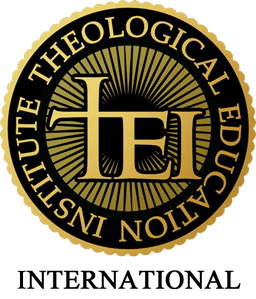Historical, Narrative, and Feminist Criticism of the Bible (brief summary)
John C. Rankin (2008)
Historical criticism refers to the school, dominated by German scholars, rooted in the Graf-Welhausen hypothesis (as it evolved), tracing back to the 1850s. It eventually yielded the documentary hypothesis of the historical sources (as reconstructed from the modern era) of the Old Testament in particular. Here, there were said to be four sources, independently or quasi-independently derived, of the OT as we now have it: J (Jehovah: advocates of a postexilic tribal deity for ancient Israel); E (Elohim: advocates for a universal creator that evolved from prior polytheistic roots); D ((Deuteronomist: advocates for the law-making or lawyerly class); P (Priestly: advocates for the hierarchy of the temple establishment). These sources were said to have both overlap and conflict in the development of Israelite and Judahite religion.
The historical criticism school also employed tradition criticism (oral history), form criticism and redaction criticism (increasingly so for the NT as well). The key assumption was that the context and meaning of the ancient biblical texts – their origins, histories and interpretations – could be discerned. History, as such, matters, and it is pre-requisite for all other, and thus, subsequent study.
In narrative criticism, the focus starts with the text in its final form (in the canon), assumes the literary units of all the individual texts within the larger text, and likewise assumes the literary features of said units will reveal and interpret the same. Narration of the storyline found in the text defines meaning, doctrine and application. Narrative criticism does root itself in assumptions concerning oral tradition, but with focus on its nature in the narrative elements of the given text. In so doing, the starting point is the present form of the text, and the need to make constructive senses of the text, including literary conventions in the Hebrew.
Narrative criticism differs from historical criticism in a) not being particularly concerned (or only in some fashion) by the historical reality behind the text, or in its reconstruction – these elements are assumed, but for the greater purpose of analyzing the text as we have it; b) it requires both a story and story-teller in a far more cohesive sense that does historical criticism; and c) the final form of the text is intrinsically coherent. This last point represents a polar opposite perspective.
Or most simply: historical criticism starts with the ancient, multi-sourced and often incoherent sources as a means for understanding the text; whereas narrative criticism assumes that the literary coherence of the narrative reflect a prior process of integrity, so that a sense of “faith” is a priori when reading the text. There is overlap in a value on the text as primary in importance, but from different historical values – the ancient hard to reconstruct v. the text as we have it now.
My method, in approaching any and all texts in history, is to ascertain first how the text, from its earliest oral and written forms, was understood by the writers and immediate readers – then to look as subsequent matters of redaction, form, etc. The assumption here is that history matters, that all effects trace back to prior causers, back to the origins of the universe. Just as with cause and effect in the physical sciences, the same reality applies to the social sciences. The questions I thus ask are prior to and deeper than “historical criticism,” for as such, “historical criticism” is a product of a given historical myopia. We are all prone to our own myopias, thus a central question I pose is how to go to the origins of sources, as best possible, and thus look forward toward my own historical setting. Thus, the Bible starts, on its own terms, with the biblical order of creation in Gen 1-2, then with the immediately subsequent definitions of sin + redemption. Yahweh Elohim as one God, not competing deities, has far greater coherence in understanding the text than does JEDP. And narrative is the nature of the Bible from the outset, but here, with a deeper sense of history than historical criticism affords.
Feminist criticism starts with a 20th century reading of the biblical text that assumes male chauvinism, or dominance, as being intrinsic to the nature of the OT + NT – in varying degrees. Women are marginalized in the text, and thus a “hermeneutics of suspicion” needs to be brought to bear, where all elements in the Bible are to be expunged or ignored that are not truly “feminist.” Schussler-Fiorenza’s “women-church”; Trible’s removal of terror. The feminist critic asks such questions as: What is the woman’s point of view? How are women portrayed? Who has power and how is it defined? How have women’s voices been suppressed? What hidden gender assumptions lie in the text? Whose interests are being served? Why are women denied positions of (cultural, political, religious) authority? Why are women always subordinate to men, regardless of role or context?
Feminist criticism thus challenges historical criticism’s concern for determining what the original text (however reconstructed) says or means – but from its own historical concerns (i.e., 19th century German scholarship v. late 20th century U.S. + the West at large). The text is no longer an inflexible canon, but now “a canon within a canon” is discerned by feminist critics. Where women are fully affirmed (in their view) but from a perspective where, based on such an assumption of equality in the natural or aspired order of things, that canon is no longer historically inflexible. It may now be altered.
I would pose the question here is greatest importance: How does the biblical order of creation treat men and women? As equals and complements? Yes. Then to see how the Bible profiles the descent into broken trust and chauvinisms, and defines redemption from the slavery of inequalities. Accordingly, taking the text on its own exegetical terms, we can see in Judges a profile of what sin does to women, contra Genesis 1-2, and provide a deeper basis to affirm the concerns of feminist criticism.
###


